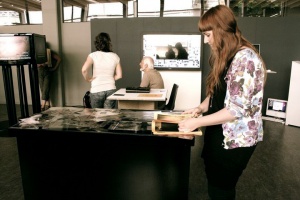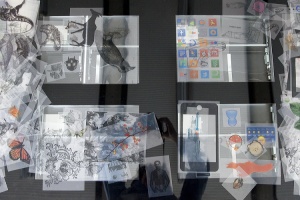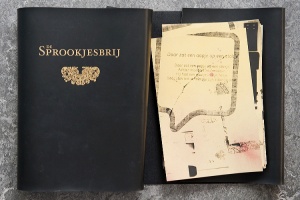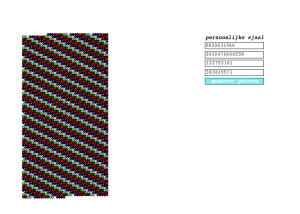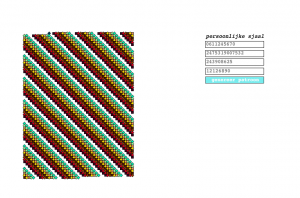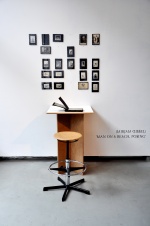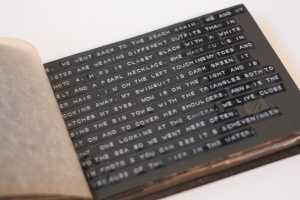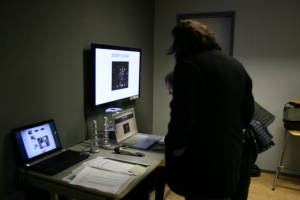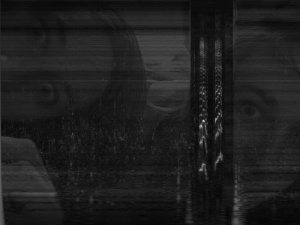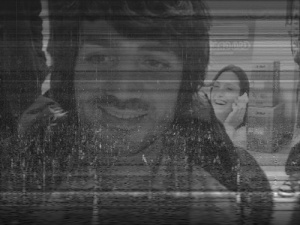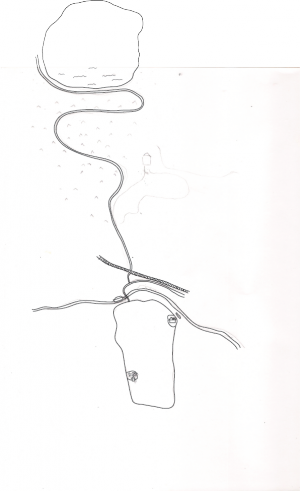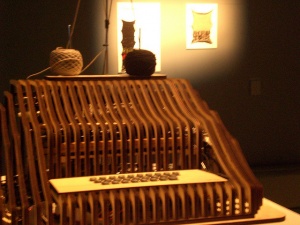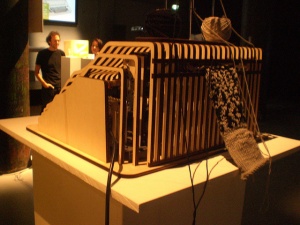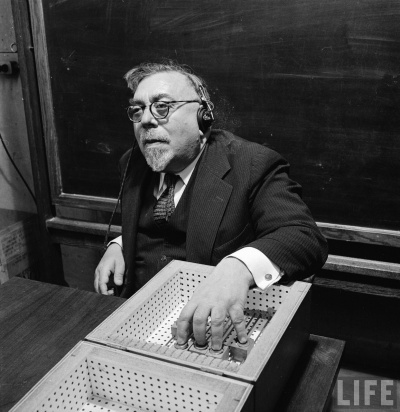User:Mirjam Dissel/proposal v2
Methodology
My projects revolve around a collective. In addition, I like to work with a collection, whether already present or made on the spot by the participants (or ‘collective’). Next to this, I like to work with individual fantasy and imagination parallel to a collaborative and collective memory. A key aspect in the projects is the role of choice. How do we choose? The manual labour that is involved in adding to, arranging or augmenting the collection in ways that are instinctual but mostly come from tradition and semiotics are a thing for me to play with and investigate. The personal perspective from this manual labour, sometimes craftsmanship, gives it value and uniqueness. I then deconstruct and rearrange the collection myself. The different ways of organizing this data become the final product. Or, the work consists of the (re)arrangements of others, as an interactive platform to continue from.
Usually, my work is a result of a broad and long research. I need dialogue with teachers and fellow students to get stimulation. At the same time I like to distance myself from the project to let things bed down and get a broader perspective. I do this by looking at other people’s work, at what’s already out there, so I can take different opinions into consideration. Next to that, I make small prototypes, from there it naturally evolves into a conceptually solid project.
To illustrate my methodology, I have explained some of my previous projects below.
Previous Practice
De Sprookjesbrij [The Fairytale Pulp]
This table has 4 scanners embedded in the surface, that scan at an interval, one after the other. Categorized into 4 open boxes on the table are hundreds of transparent sheets, printed on them are very diverse images and texts. The audience can create a collage and after each round of scanning on one side under the table a printer spits out the combined images.
Inside the table a script working on 4 linked iMacs and a printer is operating the scanners and processing all the data. The scanned images are not just stacked on top of one another, one image is displayed small in the upper corner of the paper while another may be enlarged. Then it sends the composition off to the printer, while the first scanner is already scanning again.
I wanted the scanner table to bring people together, a collective of people working towards a common goal. This is why you can create a text and image based collage with multiple people, using the collection of visuals I provided in boxes. The texts in fact are fairytales, rhymes and urban legends, because all these folk tales have been uniting people over centuries. The images are mostly animals (fables). Every day, the stack of paper rolling out of the printer becomes one volume of a collection of fairy tales. I did not want the technology behind the installation to be visible, the scanners are now only visible as a mesmerizing purple lines, magically moving from one side to the other. In a table, they intuitively let people interact with the installation, move the sheets around, but most importantly: interact with each other. They work together on one composition or try to sabotage each other.
Knitting pattern
This is a very small project, very simply said: this is a generator that uses your personal data (telephone number, Albert Heijn bonuscard number, BSN (social security) number, and bank account number) as an input to generate a unique knitting pattern. Each parameter is responsible for an aspect of the pattern: width, height, color, holes, knit or purl stitch. I was researching what defines my personal style, or what defines me? For example I buy a scarf, I try to be unique, I try to be fashionable. But when I see someone else walking with that same item months later, maybe combining it completely different, it still feels awkward, in that moment the scarf doesn’t feel mine. The government and other businesses distinguish me from all the other people by giving me a number. I tried to combine these two very different concepts of what defines me, fashion and a corporate filing system.
Man on a Beach, Posing
In an old Dutch photo album from the 1920’s a story is told through text written in Dymo tape. The pictures that were once in the album are hung on the wall, themed together on subject. The story in the album starts out plain and descriptive, and as you go on the story gets more informative, more background information is revealed: what beach actually is visited, where the depicted mill stood, character development and through that the relationship between the characters are also shared. The reader gets to know the names of the characters and towards the end, the point of view shifts between the protagonists.
I bought this album on marktplaats.nl (a dutch craigslist.com, for selling second hand items). I started looking at the pictures inside and investigating them closer. With online research, consulting other people and prior knowledge, I found out the basics of the pictures. I took my own journey of discovery as an example (as opposed to giving the reader the full story right away).
These pictures in private photo albums function as placeholders for complex and rich memories that are activated when we see these pictures. An abandoned album has something sad about it, because there is nobody whose memory can be activated by these pictures anymore. I wanted to let people think about memory and remembering, every time you look at a picture and remember the event, you are recreating it in your mind, this is highly connected to imagination. With the pictures taken out of my bought album and replaced by Dymo tape, there is only a textual description visible and you start imagining the story on the fantastic visualizations you have created in your mind. So by making up an entire story that could be called ‘memory’, I am reactivating the album by reconnecting it to a potential memory. It could be the story told by the pictures. The story could also be different - we simply don‘t know.
Desert of Sine
From a computer a user can upload any (webcam) image to the server and the computer will turn it into a 1 minute loud futuristic sound using sine waves. This plays through a speaker set. At the same moment a microphone connected to the same computer will record that sound again with background noises present, and transform it back into an image. This way the image will show the interference during the transformation, capturing time and space of the surroundings, becoming some sort of map because of this extra layer of data that is embedded. The resulting images are black and white and grainy all over, with peaks here and there. They are uploaded to the internet and shown on another screen simultaneously.
General Intro on Graduate Proposal
I want to work with my dreams, but I’m not necessarily going to work with the exact content of these dreams. I’ve tried to discover a pattern between these dreams, because the subject appeals to me: while I’m dreaming I remember other dreams. The information about these past dreams is available to me only while I’m dreaming - not when I’m awake.
Nevertheless, for the moment, the dreams are only to be seen as the material I want to work with now. I realize that my dreams in itself probably have little value to an outside audience, as these dreams are not theirs and cannot be dreamed again by someone else, they require a tool or technique for the public to relate to them and experience them. I’m interested in how subjectivity is thus renarrated through systems and schematized. My work has been a balance between intimate subjectivity translated into a system that at that point is functioning as a distancing process, whether it be the interpretation of a private photo album or even using this schematized way for dealing with fairy tales.
Because of this, I want to produce a series of works, deriving from these dreams. I’m going to analyze these works afterwards and discover what the underlying pattern of my fascination is.
Roughly speaking, from there, the project can go into three directions:
- Navigation. The fact that I can navigate through my mind, open doors and find chunks of thoughts that I haven’t accessed for years, and move through my mind in a way that I cannot even begin to imagine doing when I’m awake, truly fascinates me. This navigational system for narration has struck me in the way that all the data that is accessible to me deeply links to one another in every way (for example, I always dream about either my grandma’s yard, her house, my parents’ house or their yard).
- The process of remembering also fascinates me. This relates to the iteration of thought and the creation of a memory. This also goes back to my previous project, ‘Man on a Beach, Posing’. This creation of memory is also what happens when I try out different ways of documenting my dreams, at that very moment I am creating the story, the different ways of documenting (writing a story, note taking, video documenting, etc) have a great effect on how well I remember something in the future.
- Objects in my dreams. I often dream about objects, devices, products and projects. This too can be described in multiple ways. First I could see my mind as a translation machine, a machine that makes new machines. I’m inventing as I’m trying to remember, in this way my mind is a translation machine from dream to memory, creating something physical. The other take on this is to make a translation machine myself, that works in a similar way to the process of my dreams. Often in dreams one thing morphs into another, without you noticing in. The machine would take one thing and turn it into another, a machine that makes connections between two things that don’t seem logical at first sight, but the outcome somehow makes sense when you see it. I want to make a translation that makes things physically tangible, decodes it so to say.
I see my graduate project going into one of these directions, but I also see that these three things are connected. While drawing objects, I am in fact creating them, which proves to be difficult as they are often impossible. Through practice I am finding these things out, and thus finding out in which direction I should go. After working on these prototypes some more, I would like to combine or amend these objects, creating more complex designs.
In any case, regardless of what my future project is going to be, the content of my dreams is probably not going to be relevant to the project in the end. What is relevant to me, is the translation, the process of physically producing objects I dreamed about. The source material will then become irrelevant. Since I don’t plan on making the dreams visible after the transformation, this distancing process, the only hint that a viewer might have of the source material used, is the transformation process itself. By transformation I mean: the process of putting physical boundaries to an object that by nature doesn’t have that. Such a process is what happens when I try to transform an object I dreamed about to an object in real life.
More on the project
What have I been doing so far?
I have been experimenting with writing down my dreams: voice recording, writing down these dreams immediately after waking up, writing down notes after waking up and making a story out of it later. I’ve noticed very different experiences between these methods: I tend to forget parts of the dreams later (when reading or listening it back later it’s almost as if I’m hearing it for the first time), or my senses are heightened, and during the day I reveal even more details about earlier that night, depending on the method. My dreams can be found here: [1].
I start the previously dreamed dreams with 'I remember a dream', to indicate an interruption while dreaming. In a while I hope to create some sort of network, possibly programmed.
As a small test I already made an adaptation of my haiku maker, I used one of my dreams to create new things I could have dreamed about.
These sentences look very plausible, in a dreamworld they could have happened, and most of all, they are still written the way I would write them down.
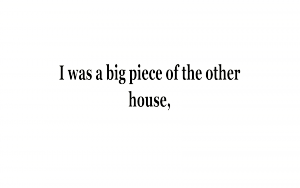
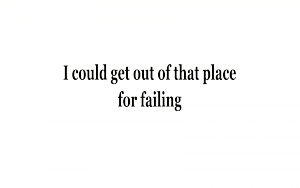
I have started to make a (continuously changing, hyperlinked) map out of my dreams. The places I dream about all seem to be based on the places I know from childhood. The most occurring places are: my parents' backyard and my grandma's living room and (back)yard, both situated in my hometown, Dalfsen. When drawing the map I noticed that I always dream that the north and south are the other way around.
A lot of times it happened that I dream of brilliant designs or ideas in my dreams, that are the basis of future projects. I'm starting to draw everything I think is interesting. It's proven to be very difficult to draw something that in a dream can make perfect sense, but in the physical world cannot exist (think M.C. Escher).
Sketches for ashtrays that I saw in my dream:
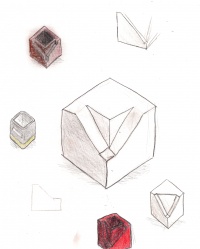
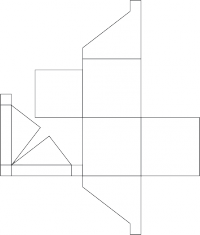
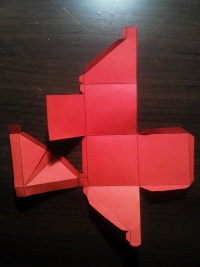
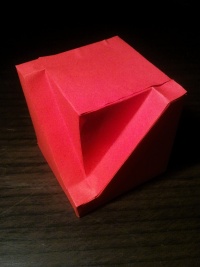
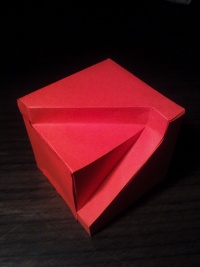
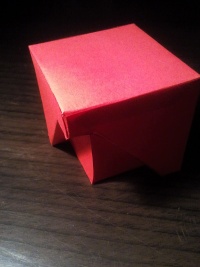
Without a hole it doesn't really function as an ashtray. I'm attracted by the geometrical shapes and inlets, I like to see it as a design for a stool now.
Sketches of a laundry drying machine that I'm just not able to draw, even though I can still recall looking at the towels and the feeling the surroundings gave me, I can't precisely describe how everything looked.
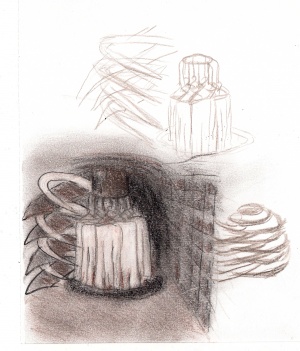
Metal construction with pins that turn and knit on top of metal chairs, but only half a knit going up, and the other half of the knit going down. It was a project by Inge in my dream.
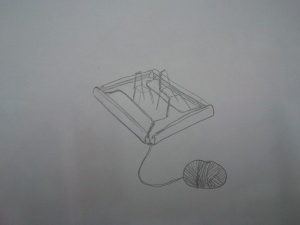
I dreamed of a collective work of paintings, I think 4 by 4 massive canvasses. Here is the first column that I recreated:
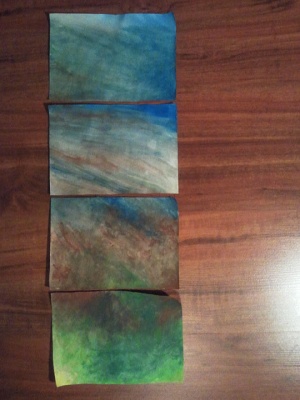
Trumpet installation in hot pink and bright yellow in the yard, while a truck with a similar device in shiny black passed by.
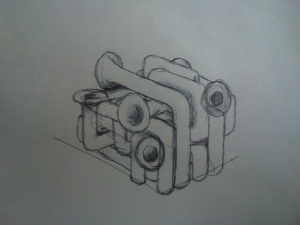
I have some more ideas to work out, based on what I dreamed about (also features the canvasses):
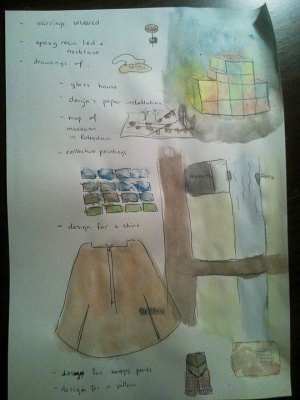
It included things like LEDs poured in epoxy resin, necklaces made of pharmacy drugs poured in epoxy resin, pillow cases by Lieven with extra zippered pockets (perhaps also equipped with sensors of some sort), a glass house, collective paintings, shirt and ugly baggy pants design, Darija's miniature IR/LED city light installation and her paper installation which looks kind of like this:
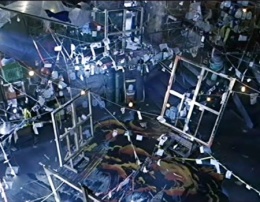
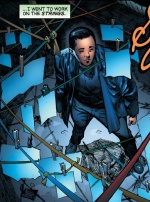
Inspiration
Next to this I have also started a collection of inspiration. Pictures of projects that I think are interesting and relate to this project in one way or another.
- TK730 - eTextiles Workspace group (2011, at V2)
Typewriter that 'translates' what's written into knitted fabric.
The explanation on the V2 website says: "What happens when senses are cross-wired in the brain?
Can data convey different meanings when interpreted as a purely visual object?
What other ways of interpreting a single piece of data could there be? This is what the TK Series attempts to explore."
Which I think fits my dream descriptions very well, sometimes it happens that you cross-wire people, objects, places.
- QR scarf and DIY QR scarf, using an electronic knitting machine. You first have to program the machine, and then move the thread back and forth by moving the carriage from left to right and back .
I'm not so much interested in the QR code itself, but I like the idea of the two "technologies" meeting.
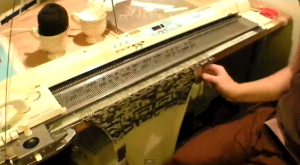
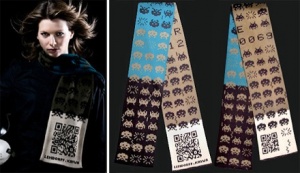
http://youtu.be/bZm6hUXgYnU
- Heart Beats - Julie Legault (2011, at V2)
Time according to heartbeats. It reminds me of my own project (below on the right) where I wanted to explore the relativity of time, depending on what you are doing or how you are feeling
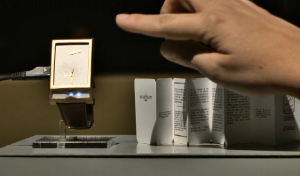
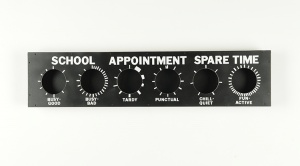
(the metal timer that is supposed to go in the holes is missing in this picture)
- Chords to open up connections:
Chord keyset (left hand) by Doug Engelbart, 1968

And a newer version by Infogrip (right hand), the BAT.
3 buttons for the thumb and one for each of the other fingers.

The possible combinations of keypresses, as a way of navigating through elements of dreams and categorizing them, reconstructing and at the same time inventing new possibilities in the future.
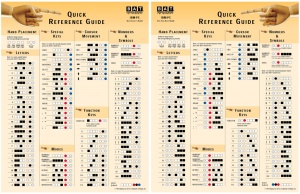
- Fold Loud, JooYoun Paek, 2007
By navigating through an origami piece one creates a melody.
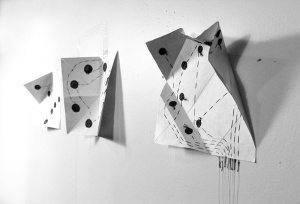
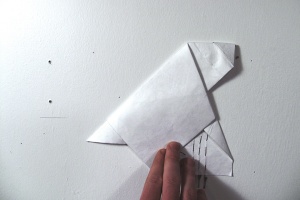
- M.I.T professor Norbert Wiener testing a device capable of converting speech sounds into patterns
- Nina Yuen. Lucid Dreaming (2001-2011,Stedelijk Museum Schiedam)
4 film performances telling dreamlike situations, letters, stories. Everything acted out by the artist, a cat's demise, Jeanne d'Arc, French symbollists, letters to her dead uncle, a spell to get a loved one back. One thing jumps to the other, while other things are repeated. Time and space are nonexistent.
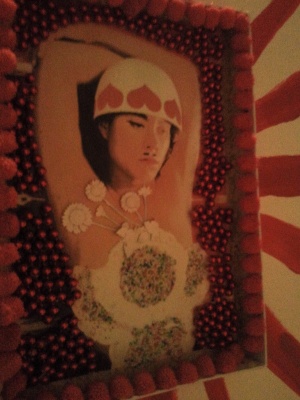
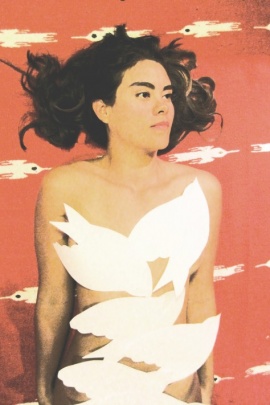
What am I looking into?
- Sigmund Freud - The Interpretation of Dreams
- Sadie Plant - The Future Looms, Weaving Women and Cybernetics
- Janet Murray - Hamlet on the Holodeck: The Future of Narrative in Cyberspace
- Michael Joyce - Afternoon, A Story (hypertext)
- Emanuel Swedenborg - Drömboken [Journal of Dreams] (a scientist in the 1700 starts having his dreams that influence his own behaviour, and his life becomes influenced by his dreams. He becomes a theologian, claiming that God is talking to him)
- William Blake (poet, painter, printmaker inspired by Emanuel Swedenborg)
- movie 'Waking Life' (about a guy who is lucid dreaming. Or actually: the dream he is having). trailer
- 70 maps (really nice, have a look)
- Kathy Acker's 'A Map of my Dreams'
- Susan Hiller's Dream Mapping (1974)
- Laurie Anderson
- Salvador Dali
- Betty Alexandra Toole - Ada: The Enchantress of Numbers (about Lady Lovelace)
- professor Norbert Wiener's inventions
- Roland Barthes - the third meaning
- Daniel Dennett - Consciousness Explained
- Hofstadter - I Am A Strange Loop
- Wendy Van Wynsberghe
- Furtherfield
- Dream Machine by Brion Gysin
- William S. Burroughs using cut-up technique (The Cut-ups)
- Traum, einer Ausstellung by Barbara Breitenfellner (collected her dreams about art, chose two and exhibited them in a gallery)
- Marion Milner - On Not Being Able to Paint

